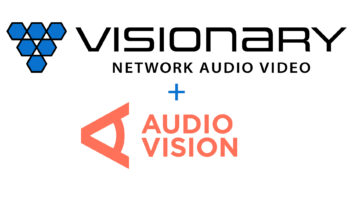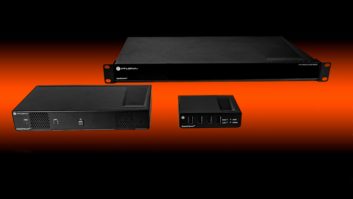
It’s important to know the difference between the two terms to get a solution that truly meets your needs, says Exterity’s Mike Allan
The AV industry has reached a pivotal moment and is increasingly moving away from legacy analogue technologies and towards IP networks that are modernising the delivery of video, audio and digital signage. There’s been a lot of talk in the industry about ‘IPTV’ and ‘AV over IP’ (AVoIP) and quite often these terms have been used interchangeably; this has created some confusion in the marketplace and risks end users’ technical requirements not being met.
IPTV has grown considerably in popularity over the last decade and has been replacing older analogue technologies based on RF and less flexible matrix switches. One of the biggest benefits of using IPTV is the simplicity and flexibility of using a single shared structured cable network and relatively low-cost IP switches for internet connectivity, application data and AV.
The Technical Explanation
IP-based video solutions, including IPTV and AVoIP, work in a very similar way. In both cases, content is ingested from a source: this could be a pre-compressed source such as broadcast TV, satellite, cable or DTV, or a Video on Demand (VoD) server. Or, it may be a baseband video source such as HDMI or SDI that is then compressed to reduce the amount of bandwidth.
This digital compressed video content is then turned into ‘packets’ that are transmitted across an IP network in chunks. This transmission is normally multicast (one to many) or unicast (one to one) with packets flowing across the IP network through switches and along ethernet cables or WiFi networks to reach a destination. At the destination device, the packets are received, assembled back into video, decompressed and played on a device such as a TV screen, video wall, projector or even a mobile device.
During every one of these steps, there’s a time delay ̶ or latency ̶ between the transmission from the source to being displayed at the destination. Each time the source video is compressed and decompressed there’s a decline in the visual quality, which is a byproduct of the video source being alerted to use less bandwidth. Admittedly, this is a very simple description, but this concept Is broadly the same for IPTV, AVoIP, Software Defined Video Over Ethernet (SDVoE) and several other specialist IP-based AV technologies. The major differences between the technologies are the degree of compression, the resulting latency and the network needed to carry the content.
Benefits and Compromises of IPTV and AVoIP
To briefly summarise, IPTV uses the most compression and introduces the greatest latency while using the most common type of networks. SDVoE has the least compression and latency while requiring the most performant network – and AVoIP falls somewhere in the middle. However, for most HD/4K content used by hotels, conference centres, stadiums and corporate offices to inform, educate and entertain guests, the trade-off between visual quality and latency are imperceptible to most viewers.
One of IPTV’s major strengths is its maturity and flexibility, which has resulted in a high level of adoption within the market and the widest ecosystem of technologies supporting IPTV, including set-top boxes and SmartTVs as well as tablets and smartphones, which can all display IPTV streams via a number of apps.
AVoIP, including SDVoE at the top end, is widely regarded as the preferred technology for use cases that require higher visual quality and lower latency. For example, a surgeon performing a laparoscopic surgery where he or she is being guided by a camera would need super low latency and very high visual quality because any mistake could have catastrophic results. Although AVoIP is functionally similar to IPTV, its ability to deliver lightly compressed video at the typical 1Gb ethernet network level is its most compelling advantage.
The Need for a Network Upgrade
The biggest compromise inherent in AVoIP, and more so with SDVoE, is the need for a more advanced network to deliver uncompressed video. This means that customers who need to carry multiple streams must invest significantly in a move to a 10Gb Ethernet network and potentially upgrade not just switches, but structured cabling across an entire facility.
The reality is that many of the AVoIP solutions available today are still relatively immature and, consequently, there’s a small number of suppliers and alternatives. This then drives up the prices for solution elements and makes network upgrades eye-wateringly expensive. For many system integrators, choosing which IP technology to use will depend greatly on the end user’s use case and technical requirements, because one IP technology does not suit all projects.
Mike Allan is chief technology officer at Exterity







